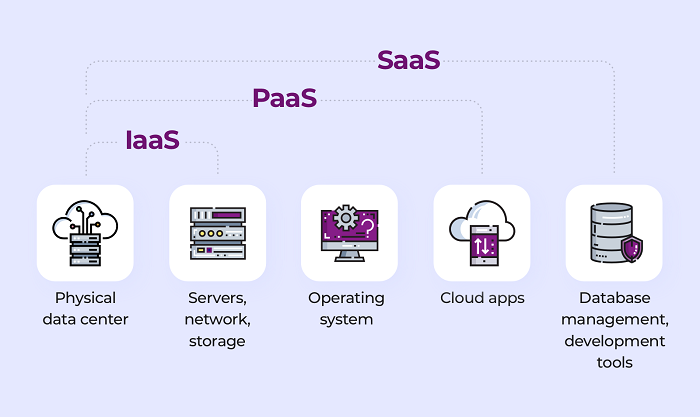Thursday 25 February 2021, by Vitaly Kuprenko

The number of mobile apps that move to cloud computing is growing extremely fast. Cloud technology is beneficial for businesses. It leads to a reduction in operational and IT managing costs. Moreover, cloud solutions can be easily scaled up and down according to business needs.
Let’s consider what steps you should follow to develop a cloud-based application.
What Is a Cloud-Based Application?
A cloud-based app is a software solution that performs the processing logic and data storage between client-side and server-side.
In short, every app has a client-side that users interact with, and a server-side that processes data and makes the app work. In the case of cloud-based applications, its data is processed by a remote server. In typical mobile apps — through the smartphone or computer’s processor.
Steps to Build a Cloud-Based Application
Cloud-based application development is quite a challenging process that differs from mobile or web development and depends on the service provider.
Let’s find out the six steps to cloud development.
#1. Do Market Research
To attract first users, you need to do market research and understand your customers’ needs. Thus you build a valuable solution for the customers. Your target users should understand why to buy your product out of others on the market.
#2. Hire Development Team
To create a cloud-based application, you need to hire an experienced team.
There are three popular options to hire software developers:
- Freelance developers. The freelance hiring option is a good choice if you have a small project.
- In-house team. It’s the right decision if you want to control the entire development process.
- Outsourced development team. It's the right option if you want to build a development team as quickly as possible.
#3. Think of Architecture and Features
It’s better to design a cutting-edge data architecture. Classic architecture can be monolithic compared with microservices architecture. The main benefits of microservices architecture are fast development projects, scalability, and isolation (when developer can deploy necessary services without changing the whole app).
#4. Define the Tech Stack
Before choosing the cloud developer tools, it’s better to consult with business analytics. They’ll review your business requirements, desired features, and design to pick the best tech stack for your product.
#5 Test Your Product
Your development team has to test your cloud-based app to make sure the functionalities are working correctly. At this stage, you ensure it works smoothly, doesn’t have any bugs, and meets user’s demands.
#6 Launch the App
Finally, you need to publish your app on the App Store and Google Play.
Google Play provides automated testing to accelerate an app release. But if the platform rejects the app, it can be challenging to understand why.
In the case of the App Store, the app tests real users. If they find an error, they’ll ask you to fix it.
In the case of the App Store, the app tests real users. If they find an error, they’ll ask you to fix it.
Here are the steps you need to follow to release the app:
1. Ensure the app meets App Store or Google Play guidelines
2. Add the required metadata like title, description, keywords, and preview videos you want to present
3. Submit the app to review
4. Wait for feedback. The App Store/Google Play team will check the app to make sure it meets the platform’s requirements and work as expected
5. Within 2-3 days, your app will either be published or rejected
Wrapping Up
Cloud-based application development creates a competitive edge providing higher accessibility of the product and excellent scalability opportunities. Just make sure you covered every step in the cloud-based app development process.